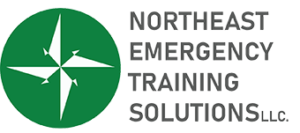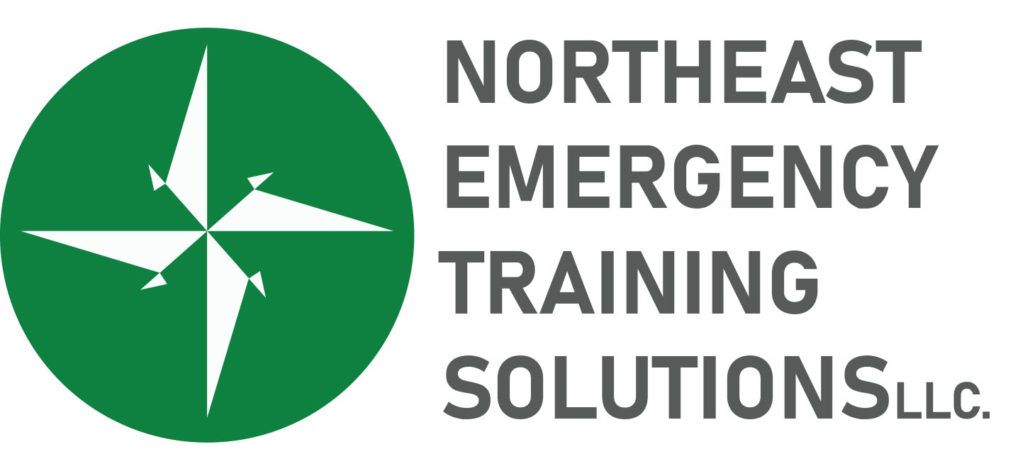Course Full. Email chris@netsvt.com to be placed on the waiting list.
Fall 2023 Hybrid EMT Course Syllabus
Sr. Instructor/Coordinator: Chris McCarthy
Email: chris@netsvt.com
Instructor/Coordinator: Kevin Adams
Email: kevin@netsvt.com
Course Meeting Days and Times:
- Mondays, 17:30 – 20:30: Instructor-led lecture & discussion via Zoom
- Saturdays, 0830-1630: Hands-on skill practice (see below for Sat dates)
Cost: $1000
Course Description
The Emergency Medical Technician Hybrid course prepares the EMT student to provide pre- hospitalassessment and care for patients of all ages with a variety of medical conditions and traumatic injuries. Areas of study include an introduction to emergency medical services systems, roles and responsibilitiesof EMTs, anatomy and physiology, pharmacology, medical emergencies, traumatic injuries, specialconsiderations for working in the prehospital setting, and providing patient transportation.
Teaching/Learning Methods:
Teaching-learning methods in this course may include, but are not limited to: assigned readings, group discussion, critical thinking exercises, labs, and class activities. Mandatory live instructor sessions will occur weekly. Zoom will be used for all live online sessions. These meetings will be recorded as a make-up option for those unable to “attend” live online sessions. This option will be permitted on a limited basis at the discretion of the course coordinator. Evaluation procedures include quizzes, written examinations, and assignments.
Weekly Zoom Meeting:
Join Zoom Meeting https://us06web.zoom.us/j/81174494228?pwd=bG5OdUVuWWVVbkZwK3g2K3g0d2xoQT09
Meeting ID: 811 7449 4228
Passcode: 471008 One tap mobile
+16465588656,,81174494228#,,,,*471008# US (New York)
+16469313860,,81174494228#,,,,*471008# US
Course Objectives:
At the completion of this course the student shall be able to:
- Describe the roles of EMS in the health care
- Demonstrate the professional attributes expected of
- Perform the roles and responsibilities of an EMT with regard to personal safety and wellness, aswell as the safety of
- Perform the duties of an EMT with regard for medical-legal and ethical issues, including functioningunder medical direction and within the scope of
- Apply principles of anatomy, physiology, pathophysiology, life span development, and therapeuticcommunications to the assessment and management of
- Identify the need for and perform immediately lifesaving interventions to manage a patient’s airway,breathing, and
- Assess and manage patients of all ages with a variety of complaints, medical conditions, and traumatic injuries.
- Apply principles of emergency medical services operations, including considerations in ambulance and air medical transportation, multiple-casualty incidents, gaining access to and extricating patients, hazardous materials incidents, and responding to situations involving weapons of mass
Functional Job Requirements:
All students must meet the functional job requirements of an Emergency Medical Technician as outlined in the Student Handbook distributed online by the Vermont Department of Health Office ofEMS throughout the program.
Course Textbook:
AAOS Emergency Care and Transportation of The Sick and Injured, 12th Edition
Other Learning Resources:
- National EMS Education Standards – EMT Instructional Guidelines (outline)
- NREMT Skill Sheets (link to Google drive)
- Vermont Statewide Emergency Medical Services Protocols 2023
- EMS Testing (online testing website)
- EMT Prep Skills Video Playlist on YouTube
Course Completion Requirements:
Successful completion of this course requires adherence to course policies, completing all course assignments, maintaining a course average of 70% with a minimum score of 70% on the course finalexamination, and successfully demonstrating all required competencies. In addition, all students will berequired to have a minimum of five documented patient contacts.
Course Attendance Policy:
Student participation is required for all scheduled live online sessions, as well as lab sessions. Students may bedropped from the course for excessive absences of any kind.
Online class attendance will be based on weekly completion of assignments (including the online presentations).
Excused absences may be granted by the course instructor/coordinator and/or TA (for group sessions) forextenuating circumstances. If more than two absences occur for any reason, the status of the student will bereviewed by the NETS faculty to determine a disposition. Course failure is likely under these circumstances.
If a student misses any weekly activities, he or she is responsible for any missed quizzes, examinations,and material covered in that block. Prompt arrival is expected at all class activities, whether in-person oronline. Like being on shift for your agency – lives depend on our prompt response and prompt attendance.
Behavioral Expectations:
Students are expected to conduct themselves in accordance with the professional expectations for EMT’s at all times. Students are reminded that they are representatives of Vermont EMS as well as the agencies they serve and this educational program. Professional conduct is essential to a successful course experience and rewarding EMS career.
Dress and Appearance:
- Students shall be appropriately and neatly attired so as not to distract from the learning Students should wear comfortable slacks or pants, shirts or t-shirts, and boots, shoes or sneakers.
- For the safety of the student and others, students may not wear shorts, tank tops, half shirts, sleevelessshirts, halter-tops, tube tops, skirts, open toe/heel shoes or
- Students should dress with safety in mind, as training sessions will require the use of various equipment andtraining
- Staff members accept the responsibility for reasonable interpretation of this policy and advising of thestudent in its
- Students arriving wearing inappropriate attire may not be able to participate in the training evolutions, forthe safety of the
*On days of practical labs the students will wear clothing similar to what they will wear while on duty with theirservice. This provides the students the ability to train like they will practice.
Academic Dishonesty:
Academic dishonesty in any form will not be tolerated and is grounds for immediate dismissal from the programand other administrative action. Examples include, but are not limited to:
- Cheating in any form
- Falsification or forgery of academic documents, applications, clinical evaluations, lab evaluations,
- Plagiarism (including copying and pasting of electronic text into assigned work)
Course Deposit and Refund Policy:
Students are required to provide payment in full to secure a seat in the course prior to the course start date. Full payment is preferred, but payment plans may be considered on a case-by-case basis following special approval from NETS Ownership. Full refunds will be issued if course is dropped prior to the start date. No refunds will be granted after the start date. Students who wish to withdraw after the start date, but within 4 weeks of class start date are eligible to attend another EMT course tuition free but will not receive a refund.
Course Grading and Grading Scale:
All class exams will be done through EMStesting.com. Each student will receive an account as part of the class.
Although passing is 70%, it is strongly encouraged that students strive for an 80% on all exams. This will encourage your study for successful passing of the CAT (Computer Adaptive Test).
Extra Assignments 10 %
3 Exams 10 % each
Skills 30%
Final Written Exam 30 %
Total 100 percent
Retest and Late Exam/Assignment Policy:
Students with a non-passing grade on an exam will be allowed (1) retest opportunity per exam. The retest must occur within (1) week of the closing date of the posted exam. (10) points will automatically be deducted from whatever score is obtained on the retest and the resulting score will be the recorded examscore in the gradebook.
Students who miss an exam, without a valid excuse, will be given a zero and must then follow thepolicy for a non-passing exam score.
As for a late assignment, (10) points will be deducted for each day that the assignment is late.
| Percent | Letter Grade |
| 100 | A |
| 95-99 | A- |
| 90-94 | B |
| 85-89 | B- |
| 80-84 | C |
| 76-79 | C- |
| 70-75 | D |
| Below 70 | F |
Students will be required to complete the following online training programs:
NIMS 100 https://training.fema.gov/is/courseoverview.aspx?code=IS-100.c
NIMS 700 https://training.fema.gov/is/courseoverview.aspx?code=IS-700.b
Haz-Mat Awareness: https://training.fema.gov/is/courseoverview.aspx?code=is-5.a
DCF Mandated Reporter: https://dcf.vermont.gov/news/training-mandated-reporters
Competency Plan
The list of skills that will be documented through competencies is:
| Laboratory Phase- Skills Lab Skill Sheets | Minimum Number of Times Competency Demonstrated Successfully | Minimum Number of Licensed Evaluator Checkoffs | |
| Assessment Skills | |||
| Lifting and Moving (ManualManeuvers/Devices) | 2 | 1 | |
| Communications (SBAR/MIST) | 2 | 1 | |
| Airway | |||
| NPA | 5 | 2 | |
| OPA | 5 | 2 | |
| CPAP | 2 | 1 | |
| O2 Administration (Combo NC/NRB?) | 5 | 2 | |
| BVM Ventilation (Combo adult/pedi?) | 5 | 2 | |
| Trauma | |||
| Trauma Adult Physical Assessment | 2 | 2 | |
| Advanced Spinal Assessment/Spinal Motion Restriction | 3 | 1 | |
| Joint | 2 | 1 | |
| Long Bone | 2 | 1 | |
| Hemorrhage Control | 2 | 1 | |
| Chest Injury Management | 2 | 1 | |
| Traction Splinting | 2 | 1 | |
| Pelvic Immobilizer (Commercial/Improvised) | 2 | 1 | |
| Medical | |||
| Medical Assessment | 2 | 2 | |
| IN Medication Admin | 2 | 1 | |
| Inhaled Medication Admin | 2 | 1 | |
| IM Medication Admin | 2 | 1 | |
| Auto-Injector Use | 2 | 1 | |
| Oral Medication Admin | 2 | 1 | |
| Sublingual Medication Administration | 2 | 1 | |
| Glucometer | 2 | 1 | |
| 12-Lead EKG Acquisition | 2 | 1 | |
| Cardiac | |||
| Cardiac Arrest Management/AED/BVM (Adult/Pedi) | 5 | 1 (A)
1 (P) |
|
| OB/Neonatal | |||
| Normal Delivery | 2 | 1 | |
| Abnormal Delivery | 2 | 1 | |
| Newborn Care | 2 | 1 | |
Competency will be determined when a student can demonstrate and correctly complete 90% of thesteps for each skill.
In addition, students will need to demonstrate competencies with scenarios:
| Scenario Labs (Total of 10 attempts each) | |||
| Team Member | 2 | 2 | |
| Team Leader (must document on 5 patient contacts) | 2 | 2 | |
The scenarios will include evaluations of pediatric, adult and geriatric patients using the followingscenario topics:
- Respiratory Distress/Failure
- Chest Pain
- Cardiac Arrest
- Stroke
- Overdose
- Abdominal Pain
- Allergic Reaction/Anaphylaxis
- Diabetic Emergencies
- Behavior Emergencies
- Seizures
- OB/GYN
- Blunt Trauma
- Penetrating Trauma
- Burns
- Hemorrhage
NETS will be utilizing Device Magic to track student progress. The application allows an instructor to documentstudent progress using an ipad. Each skill sheet will be entered in the system. Each attempt is stored as part of an excel spreadsheet which will allow us to generate reports by student or skill and will allow VTEMS to seestudent attempts and progress.
The NETS instructional team will be documenting progress of students through the class. NETS will have a committee comprised of the Director of Education, EMS Program Manager and owner who will review allportfolios at the end of class and determine if a student has achieved successful competency or will requireadditional work before they can move forward to
testing.
Course Schedule (Dates highlighted in green are Saturday sessions)
| Date | Chapter | Tests, Quizzes, Lab DayInfo |
| Week 1 | Course Introduction and Overview | |
| 9/25 – 10/1 | Chapter 1EMSSystems | |
| Chapter 2
Workforce Safety and Wellness |
||
| Chapter 3
Medical, Legal, and Ethical Issues |
||
| Chapter 4
Communication and Documentation |
||
| Week 2 | Chapter 8
Lifting and Moving Patients |
|
| 10/2 – 10/8 | ||
| Chapter 9
Patient Assessment |
||
| Chapter 10
Airway Management |
||
| LAB: 10/7 | ||
| Lab: Skill Competencies | ||
| Week 3 | Chapter 5
Medical Terminology |
|
| 10/9 – 10/15 | ||
| Chapter 6
The Human Body |
||
| Chapter 7
Life Span Development |
||
| Chapter 13
BLS Resuscitation |
| Date | Chapter | Tests, Quizzes, Lab DayInfo |
| Week 4 | Chapter 11 | Exam 1 |
| Principles of Pharmacology | ||
| 10/16 – 10/22 | ||
| Chapter 12 | ||
| Shock | ||
| Lab: Skill Competencies | ||
| LAB: 10/21 | ||
| Week 5 | Chapter 14
Medical Overview |
|
| 10/23 – 10/29 | ||
| Chapter 15
Respiratory Emergencies |
||
| Chapter 16
Cardiovascular Emergencies |
||
| Week 6 | Chapter 17
Neurologic Emergencies |
|
| 10/30 – 11/5 | ||
| Chapter 18
GI/GU Emergencies |
||
| Chapter 19
Endocrine and Hematologic Emerg. |
||
| Chapter 20
Immunologic Emergencies |
||
| Lab: Skill Competencies | LAB: 11/4 |
| Date | Chapter | Tests, Quizzes, Lab DayInfo |
| Week 7 | Chapter 24 Trauma Overview | Exam 2 |
| 11/6-11/12 | ||
| Chapter 25
Bleeding |
||
| Chapter 26
Soft-Tissue Injuries |
||
| Chapter 28
Head and Spine Injuries |
||
| Week 8 | Chapter 21
Toxicology |
|
| 11/13-11/19 | ||
| Chapter 22
Psychiatric emergencies |
||
| Chapter 23
Gynecologic emergencies |
||
| Lab: SkillCompetencies | LAB: 11/18 | |
| Week 9 | Chapter 27
Face and Neck Injuries |
|
| 11/20 -11/26 | ||
| Chapter 29
Chest Injuries |
||
| Chapter 30
Abdominal / GU Injuries |
||
| Chapter 31 Orthopedic Injuries |
| Date | Chapter | Tests, Quizzes, Lab DayInfo |
| Week 10 11/27-12/3 | Chapter 32
Environmental Emergencies Chapter 36 Patients with Special Challenges Chapter 35 Geriatric Emergencies Lab: Skill Competencies |
LAB: 12/2 |
| Week 11 12/4-12/10 | Chapter 33
OBGYN / Neonatal Care |
Exam 3 |
| Week 12 12/11-12/17 | Chapter 34
Pediatric Emergencies |
LAB: 12/16 |
| Week 13 | Chapter 37
Transport Ops |
|
| 12/18-12/24 | ||
| Chapter 38
Vehicle Extrication & SpecialRescue |
||
| Chapter 39
Incident Management |
||
| Chapter 40
Terrorism Response / DisasterManagement |
||
| Chapter 41
Team approach to healthcare |
||
| Lab: SkillCompetencies |
| Date | Chapter | Tests, Quizzes, Lab DayInfo |
| Week14 1/2-1/7 | Review – WILL BE ON TUE
Lab: Scenario Competencies |
LAB: 1/6 |
| Week15 1/8-1/14 | Review | |
| Week 16 1/15-1/21 | Final Review
Lab: Scenario Competencies |
LAB: 1/20 |
| Week 17 1/22-1/28 | Final Exam CompetencyFinals | Final Exam
Saturday, 1/27 |












